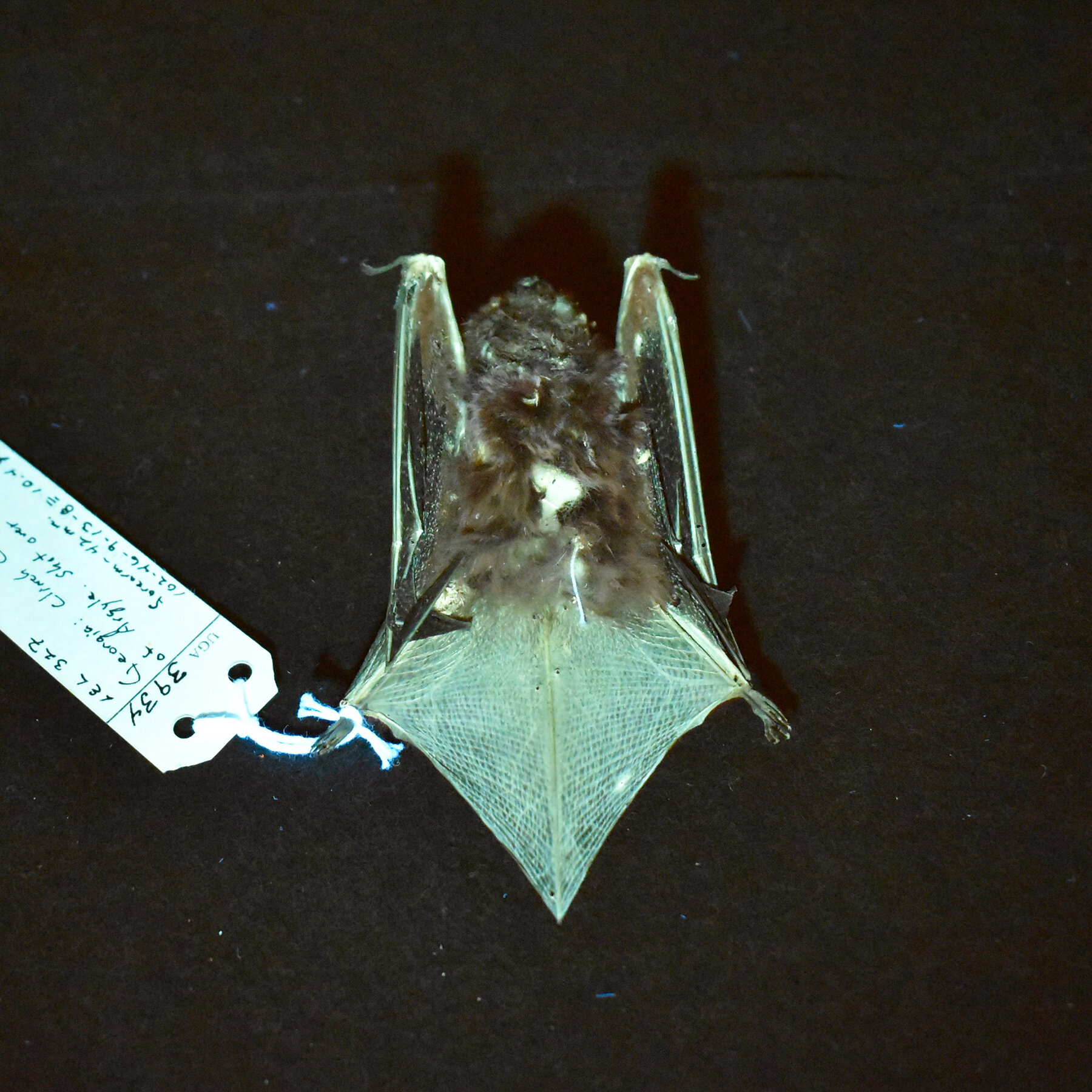Science
North American Bats Glow Green: Study Reveals Surprising Discovery

Recent research has uncovered a fascinating phenomenon: six species of bats in North America emit a glow at nearly identical wavelengths. This discovery, detailed in a study published by researchers from the University of California, Berkeley and the University of Massachusetts Amherst, challenges previous assumptions about how these mammals interact with their environment.
The study highlights that these bats, which include species such as the Mexican free-tailed bat and the big brown bat, produce a green fluorescence under ultraviolet light. The glowing is attributed to a biochemical process that remains largely unexplained. Researchers believe this feature may play a role in mating or predator avoidance, although the exact function is still under investigation.
Understanding the Science Behind the Glow
The glowing phenomenon occurs at wavelengths around 510 nanometers, a detail that has intrigued scientists. The research team utilized advanced imaging techniques to observe the fluorescence in various species, revealing that this characteristic is not just a random occurrence but a consistent trait among these bat species.
Dr. David H. H. Wang, a lead researcher in the study, emphasized the significance of this finding. “We had no idea that multiple bat species would share this glowing characteristic,” he stated. “It opens up new avenues for understanding the evolutionary pressures that could lead to such a trait.”
The ability to glow may provide advantages in low-light environments, where visibility can be limited. This adaptation could enhance communication among bats or serve as a warning signal to potential predators. The research team is now focused on determining whether this glow has evolved independently in different species or if they share a common ancestor that possessed this trait.
Implications for Conservation and Future Research
The implications of this discovery extend beyond curiosity about bat behavior. Bats play a crucial role in many ecosystems, including pest control and pollination. Understanding their biology and behavior is essential for conservation efforts, particularly as many bat populations face threats from habitat loss and diseases like white-nose syndrome.
The research, published in the journal Nature Communications, highlights the need for ongoing studies into bat biology. As researchers continue to explore the significance of this glowing trait, they may uncover further insights into the adaptive strategies of these mammals.
This exciting study not only enriches our understanding of bat ecology but also underscores the importance of protecting these species and their habitats. As scientists delve deeper into the mysteries of nature, discoveries like this remind us of the intricate relationships that exist within our ecosystems.
-

 Lifestyle3 months ago
Lifestyle3 months agoLibraries Challenge Rising E-Book Costs Amid Growing Demand
-

 Sports3 months ago
Sports3 months agoTyreek Hill Responds to Tua Tagovailoa’s Comments on Team Dynamics
-

 Sports3 months ago
Sports3 months agoLiverpool Secures Agreement to Sign Young Striker Will Wright
-

 Lifestyle3 months ago
Lifestyle3 months agoSave Your Split Tomatoes: Expert Tips for Gardeners
-

 Lifestyle3 months ago
Lifestyle3 months agoPrincess Beatrice’s Daughter Athena Joins Siblings at London Parade
-

 World3 months ago
World3 months agoWinter Storms Lash New South Wales with Snow, Flood Risks
-

 Science3 months ago
Science3 months agoTrump Administration Moves to Repeal Key Climate Regulation
-

 Business3 months ago
Business3 months agoSoFi Technologies Shares Slip 2% Following Insider Stock Sale
-

 Science2 months ago
Science2 months agoSan Francisco Hosts Unique Contest to Identify “Performative Males”
-

 Science3 months ago
Science3 months agoNew Tool Reveals Link Between Horse Coat Condition and Parasites
-

 Sports3 months ago
Sports3 months agoElon Musk Sculpture Travels From Utah to Yosemite National Park
-

 Science3 months ago
Science3 months agoNew Study Confirms Humans Transported Stonehenge Bluestones









